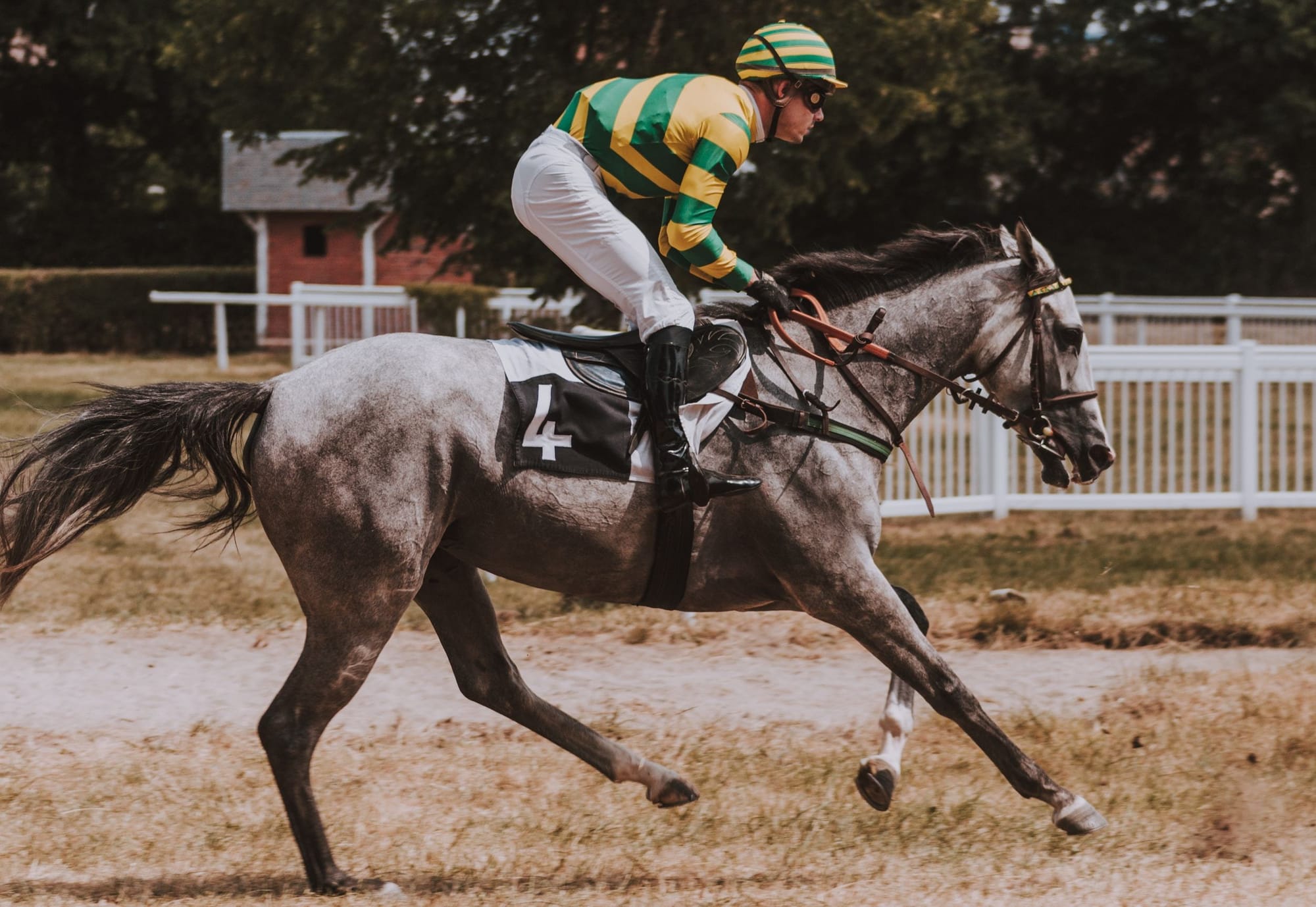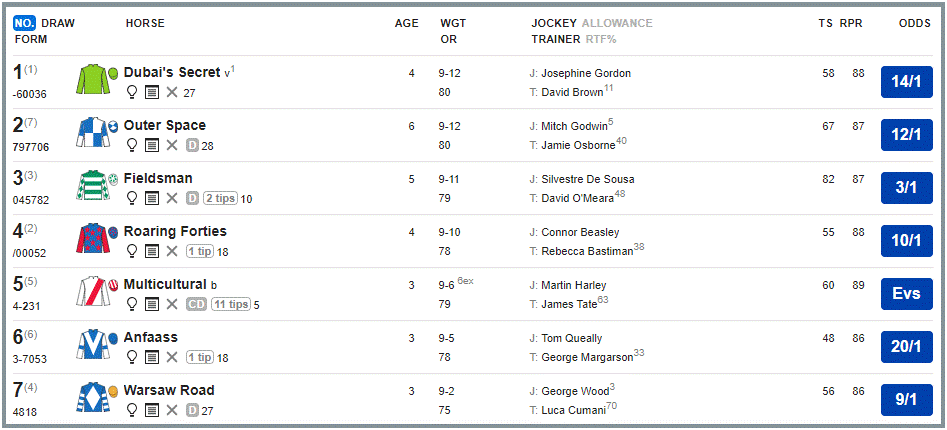Becoming Proficient at Risk Aversion - Take Your Horse Race Betting to the Next Level

Take Your Horse Race Betting to the Next Level
Almost everyone who watches a horse race places a wager on it. But only a few of those people will actually win. Some people use small bets as a form of social entertainment, so they don’t really care about the outcome.
But for those who are serious about wanting to win, there are several ways that you can use strategy to increase your overall returns.
If you already have a basic understanding of betting on horse races, but you are looking to take your game to the next level, this article will cover some of the essential techniques that you will want to use to become a successful bettor.
We’ll look at how to research before the race, how to shop the odds, how to use different kinds of bets to your advantage, and how to deliberately expand the number of runs that you are betting on.
There is a lot of detail here, so you might want to refer back to it as you practice these tips, or so you can take it one suggestion at a time before moving onto the next one.
Even professional gamblers have losses regularly. The difference between a successful and unsuccessful bettor is not how many wins or losses they have, but how much their overall return is affected by each gain and loss.
The following strategies will not guarantee that you win every time, but they will increase your chances of getting a higher overall payout. No matter what kind of wagers you are placing, it is crucial to always gamble responsibly.
Gambling is exciting because it is a risk, but you should only take that risk if you are prepared to handle the possibility of a loss.
Always make sure that you have paid your mortgage or rent, bought the shopping, and taken care of the family and yourself financially before you even think about placing a bet.
Use a betting bank budget to know how much you can potentially lose without risking your financial security. If you think you might have a problem or simply for more information on gambling responsibly visit https://www.begambleaware.org/
Tip #1- Do Your Research
Thousands of people bet millions on horse races each year, but only a tiny percentage of those people do any proper research before selecting which horse to bet on. Even just a cursory glance at the racing program before you place your bet can significantly raise your chances of winning.
Racing form guides and sites such as JSH will give you all of the information you need to know about a race and the horses competing. It won’t tell you definitively which horse to bet on, but it will at least give you the information that you need to make an informed decision. It will be helpful for you to refer back to the following sample as we discuss each part of the racing form.

First, you should get some background on the race itself. The top of the racing form will list the time and location of the race along with the distance of the course. Underneath that it will explain the requirements to enter the competition and the race’s classification.
Typically there is one crucial piece of information that is not listed on most form guides, and that is the type of track.
If you are not using JSH you can do a quick internet search to find out the kind of surfaces available at each location. If you bet on multiple races, you will quickly learn which venues have all-weather, which ones have turf, and which ones have both.
The rest of the form guide will give you information about each of the horses competing in that race. The horses are usually organized by the number that they will wear during the race. To the right of that number, if it is a race on the flat there might be a number in brackets that indicates the horse’s draw. The draw is their starting position in the stalls. Some places have advantages and disadvantages so pay attention to that information when you select the horse to bet on.
Next to the numbers will usually be the jockey’s shirt colour and pattern followed by the horse name.
There should be a column on the form guide listing the horse’s recent form (finishing rank in their past few races). Sometimes these are listed underneath the horse’s number instead of in the next column. If there is a letter instead of a number, it usually means that the horse was pulled up, fell or was disqualified for some reason. Note the number of races that the horse has been in recently. If there are only a few races listed, you may want to do some extra research to find out why.
Knowing which horses are consistently in the top three is a good indicator of who is most likely to win the race. However, it is important to remember that each race is different. Some tracks are shorter than others; some runs may have a horse wearing blinkers while others may not. It is a good idea to find out more information about the past performances listed on the racing form so that you can notice correlations.
For Example:
You might begin to see that a particular horse wins more often when it is on all-weather instead of a standard turf surface. Pay attention to those details so that you can recognize any patterns that might influence your selection in a particular race.
On most race forms there will be columns of information about each specific horse, including its name, gender, colour, and its lineage. If the horse is from overseas, you should see an abbreviation of its country of origin, usually in brackets. The colour and gender will be listed as an abbreviation in one or two lowercase letters. For example, “c” stands for colt, while “ch” is for chestnut.
Next, to the horse’s name, you will see some numbers and letters. The number refers to how long it has been since its last race. The capitalized letters are a code used to describe information about the horse’s record. For example, if you see the letter CD next to the horse’s name, that horse has won races at this course and distance before.
The lowercase letters explain equipment that the horse will be using for this race, such as blinkers or visors. Sometimes, the equipment information is listed in the next column. That column will contain the horse’s age and how much weight it will be carrying during the race, registered in stones and pounds, where a stone equals fourteen pounds.
The form guide will also name the jockey and the trainer for the horse. It is recommended to do a quick search on the riders and trainers of horses that you might bet on. The trainer’s record of wins will be a good indication of the possibility of placing in the top three.
Most of the time, there will be a column showing the official rating, a simple way to tell how likely a horse is to win.
Subscribing to JSH will provide you with all of this information and much more including our own ratings.
Obviously all of this information can be overwhelming. Form guides have a ton of information, but as you can see, some of that information is more important than the rest.
I recommend starting with just one aspect of the form guide. Familiarize yourself with everything you need to know from the horse information section.
Once you have learned how to use that to make selection, begin expanding to the past performances, ratings, and finally the course information. Take it one step at a time, and before you know it, you will be astounded at how much you have learned.
Tip #2- Mix up your types of bets
Up until now, we have focused on the most common type of wager for horse racing, the win bet, where you just choose which horse you think will win and hope that you are right.
However, there are so many more bets available besides that one. If you really want to take your horse race betting to the next level, learn how to incorporate different types of bets and use them strategically.
The first thing that you need to know about the different types of bets. For this article, we are going to focus on bets that are commonly used in the UK.
Types of Racing Odds
Before we can get into all of the different kinds of the bets, you need to know about the types of racing odds used to calculate the payouts for each type. There are two primary betting systems used in horse racing. There is also the tote betting system which is beyond the scope of this article.
Fixed odds betting is one of the most common systems across different sports. When you place a bet using fixed odds, you stake a wager with a bookmaker, who has established odds for that bet. Your payout is calculated on the amount you staked multiplied times the odds. Odds are expressed as fractions or decimals.
Or, Starting price betting which means that the odds are not known until the start of the race after the bets are in.
Below is an example of a fixed odd bet, an example for starting price is exactly the same except as explained above the price is obviously not known until the start of the race, so instead of 5/1 in the example it might be a higher or lower price at the start of the race.
Let’s say that you bet that 'Bolton Wonder' will win this years Derby at 5 to 1 (5/1 or 6.0 decimal) odds with an original stake of £10. If Bolton Wonder wins, you will win £50, plus you will also receive back your original £10 giving you a total return of £60. If you backed your selection on a betting exchange site your £50 win would be reduced by their percentage charge, for example Betfair typically charge 5% of winnings, so your £50 would reduce to £47.50 but it is worth pointing out that exchange prices are more often than not a decent amount higher than their bookmaker equivalents.
It’s pretty easy to understand fixed and starting price odds betting once you get started. One of the benefits of fixed odds is that you can almost always calculate your potential payout before you place the bet.
Nowadays, exchange betting, such as on Betfair and Betdaqa together with the increasing uptake of mobile and PC technology means that it is massively growing in popularity.
With exchange betting, instead of betting against a bookmaker, you bet against another person. Essentially, you choose a horse, set your own odds, and offer a stake amount, and you hope that another person bets the opposite of your selection. Exchange betting allows people to make lay bets against a horse.
It is often easier to choose a horse that won’t win instead of one that will, but bookmakers don’t usually offer these types of bets.
Understanding the difference in your possible payouts can help you deliberately use different methods for different bets to get the highest payout. Incorporating different ways of betting is equally as useful as including various types of wagers, as long as you are smart about it.
Place Bets
When it comes to horse racing, the most common bet after win bets is the place bet. Place bets are standard in pretty much every country, but they are organized a little bit different in some countries than others. In the United States, you choose one horse, and you will win if that horse comes in either first or second place.
It is basically a way of increasing your chances to win because you have two opportunities to be right instead of one.
In other countries, the place bet is pretty similar, except that they allow you to cover more ranks depending on the number of horses in the race. For example, you may be able to bet that your horse will come in any of the top three or four places depending on the details of that race.
Place bets are great for times when you think that your horse has a pretty good chance of winning but you’re not sure, because it allows you to hedge your bet a little.
In the United States, you can still bet up to the third place, but we usually call those show bets instead of place bets.
Across the board, bets are used in the U.S. as a way to combine win, place and show stakes into one bet. The idea is that you bet an equal dollar amount on each wager. If your horse comes in first place, you get a payout on the total amount. If it places in second, you get two-thirds of the payout, and third place gets you one-third.
Bets are another excellent way to make a fortune when you are confident that a horse will do well, but you aren’t sure if it will win first place. You can still get a payout even if the horse comes in second or third place. The rest of the world calls these each way bets, but they usually just combine win and place bets since other countries don’t tend to use show bets.
Multiple Horse Bets
Another fun way to incorporate various bets is to bet on multiple horses in the same race. Depending on which one of the following stakes you choose, it may be harder to win, but the payouts are usually higher. If you have done your homework and are confident about your selections, these are an excellent way to get a bigger bang for your buck.
There are two ways to bet on two horses at a time, the exacta bets and the quinella.
To place an exacta bet, you choose the horses that you think will win a first and second place. To win, you have to get both horses and their order right. Exactas are sometimes called dual forecast, perfecta, or exactor. A quinella bet is also guessing the top two places, but you don’t have to get the order right to win, so quinellas are easier than exactas. Quinellas also go by other names like reverse exactas, reverse forecasts or reverse perfectas.
Based on the everyday use of the word trifecta, you can probably guess what a trifecta bet is; a bet on which three horses will win the top three spots in the race. A superfecta takes it one step further to allow you to wager on the top four spots in a run. These are some of the most challenging bets to win because you have to get the order right, but they have massive payouts when you do win.
I suggest that you use these bets sparingly and only when you are super confident in your choices. Another alternative is to make a reverse trifecta that doesn’t require you to guess the correct order.
Another fun type of wager for multiple horses is called a match-up bet. In a match-up, the bookmaker chooses a pair of horses, and you simply choose which horse will finish ahead of the other one. With match-up bets, it doesn’t matter who wins the race overall because you only have to decide which horse will beat one other one. These are fun, easy ways to mix up your bets without having to do a lot of extra work, especially if you aren’t sure who the overall winner will be.
Multiple Race Bets
Instead of betting on multiple horses, you can also bet on numerous races. These bets are appealing to many gamblers because they don’t cost much, but they can have huge payouts, but the higher the payout, the higher the risk. These are incredibly difficult to get right because you are placing bets on multiple variables.
For the most part, all of the multiple race bets work the same way. You choose who you think will win first place in consecutive races at the same track. If you are selecting the winner in two runs, it is called a daily double. You can also choose winners for three, four and six races in bets called pick-3, pick-4 or pick-6. In the United Kingdom, pick-6 bets are called scoop six wagers.
Another way to bet on multiple races, or numerous horses and various races is to place an accumulator or parlay bet. These are less common in the U.S., depending on the betting system used but they are available. There are virtually endless possibilities for parlays because you are placing as many bets as you want into one combination.
Some of the most common accumulators are super Yankees, where you put 26 bets on five horses, or Heinz of 57 total wagers on six horses, or goliaths with a total of 247 separate bets on eight horses.
Obviously, these are harder to win because you have to get all of your selections correct or you will lose it all. I would suggest getting used to each bet before you attempt an accumulator.
